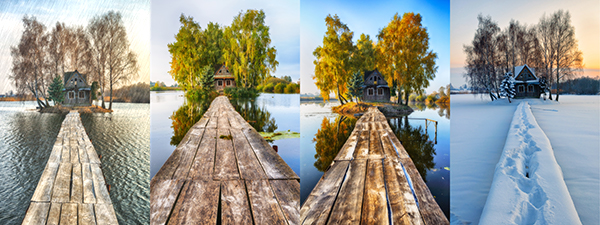
One of the most difficult things included in building a custom home in Summit is determining your timeline. Attempting to determine when your new home will be completed is essential to choosing when to place your present house up for sale, when to start buying furnishings, and maybe most significantly when to begin building. There are a lot of variables that determine roughly how long it will take to build your home such as regional local, type of home, and most recognizable, weather. Becoming aware of these elements and providing them sufficient consideration will help you restrict delays during building.
Weather Affects Building Time in a Variety of Ways
It might seem like an obvious aspect, but the weather certainly impacts the developing time of custom home in Summit in a lot of methods. Consider the worst of each season when considering when to begin developing your customized home. Every season includes a personal listing of unfavorable aspects that affect how long it will take to finish your project.
Spring
Rain and thunderstorms can cause not just muddy and messy work sites, but they can also increase the possibility of damage due to unsafe working conditions. Dampness in the air impacts numerous construction supplies. Paints drying and adhesion time are greatly affected when you try to use it with moisture in the air and can trigger significant delays. Other materials such as wood and drywall have to have limited access to dampness due to weakening of the product, swelling, and mold development. Even products such as bricks can swell when left uncovered and exposed to a lot of water.
Summer
Intense heat and dryness can be equally as detrimental to building supplies. If concrete is being utilized during the summer, it always demands extra water so that the integrity of the final item is not diminished. For products such as bricks, extremely higher temperatures can impact bricks capability to bond with mortar which may outcome in weakness. Warmth also affects paint by making cracking, blistering, as well as discoloration. Apart from the influences heat has on products, operating circumstances throughout the summer may be very taxing to the workers on the construction site. Dehydration and sunstroke can impact workers ability, reflex time, and ability to think straight. A final factor in regards to summer is that it tends to be the busiest time of year for construction so finding groups and employees that will be accessible for your project can lead to sudden delays if no one is available.
Fall and Winter
Intense cold may have lots of the same effects on building supplies as moisture and higher temperatures. If you have ever attempted to paint in the cold or with cold paint, you know it’s almost impossible. When the solvents and water in the paint get very cold, there is a significant decrease in the curing time. This makes it very hard to use. When substances such as grout and mortar freeze, they’re unable to appropriately soak up moisture resulting in weak masonry and reduced water resistance in the final product. Other than the unfavorable effect on materials, construction machines require additional attention within cold climates so that motor liquids do not freeze.
You will find Many Factors that Affect Building a Custom Home in Summit
No matter how nicely you plan, the one thing you can completely count on is sudden delays. You can spend months or years planning and taking many things into consideration with regards to deciding when to begin construction of your customized home in Summit, but there’s just no way to account for everything. The climate is always unpredictable and with regards to building a custom home, 1 delay can snowball and impact the whole project and timeline. Ensuring you are operating with a skilled and trustworthy custom home builder in Summit is crucial to keeping your delays and issues to a minimum.
The Best Time of Year to Begin Building a Custom Home in Summit is Late Spring
An update on how the time of year affects building schedules 3/15/2024
Beginning the construction of a custom home in Summit requires careful consideration of weather patterns to minimize delays. The best time to start construction is late spring through early summer. This timing takes advantage of the moderate temperatures and reduced precipitation, providing a stable environment for laying foundations and completing critical outdoor work.
Late spring, specifically late April through May, is ideal for beginning construction. During these months, the ground has usually thawed from winter, reducing the risk of frost that can delay foundation work. Additionally, the drier weather conditions in late spring help in minimizing mud and water-related construction delays. Starting in this period allows significant progress on the exterior and structure before the peak summer rains.
Early summer, extending from June to early July, continues to offer favorable construction conditions. The days are longer, providing more daylight hours for work, and temperatures are generally warm but not excessively hot, which can be beneficial for both labor efficiency and material curing times. However, one should be mindful of the potential for occasional summer storms, planning construction schedules with flexibility to accommodate unexpected weather.
By beginning construction in these months, the project can progress to indoor work by the time the more unpredictable weather of late summer and early fall arrives. This strategy helps ensure that the exterior is sufficiently complete to prevent weather-related interruptions during interior work.
In conclusion, targeting late spring to early summer for starting construction in Summit is strategic for avoiding weather-related delays. This timing leverages the period of optimal weather conditions, balancing the need for dry, workable ground and manageable temperatures. Planning construction around this schedule can significantly reduce the risk of weather-induced setbacks, ensuring a smoother and more efficient home-building process.